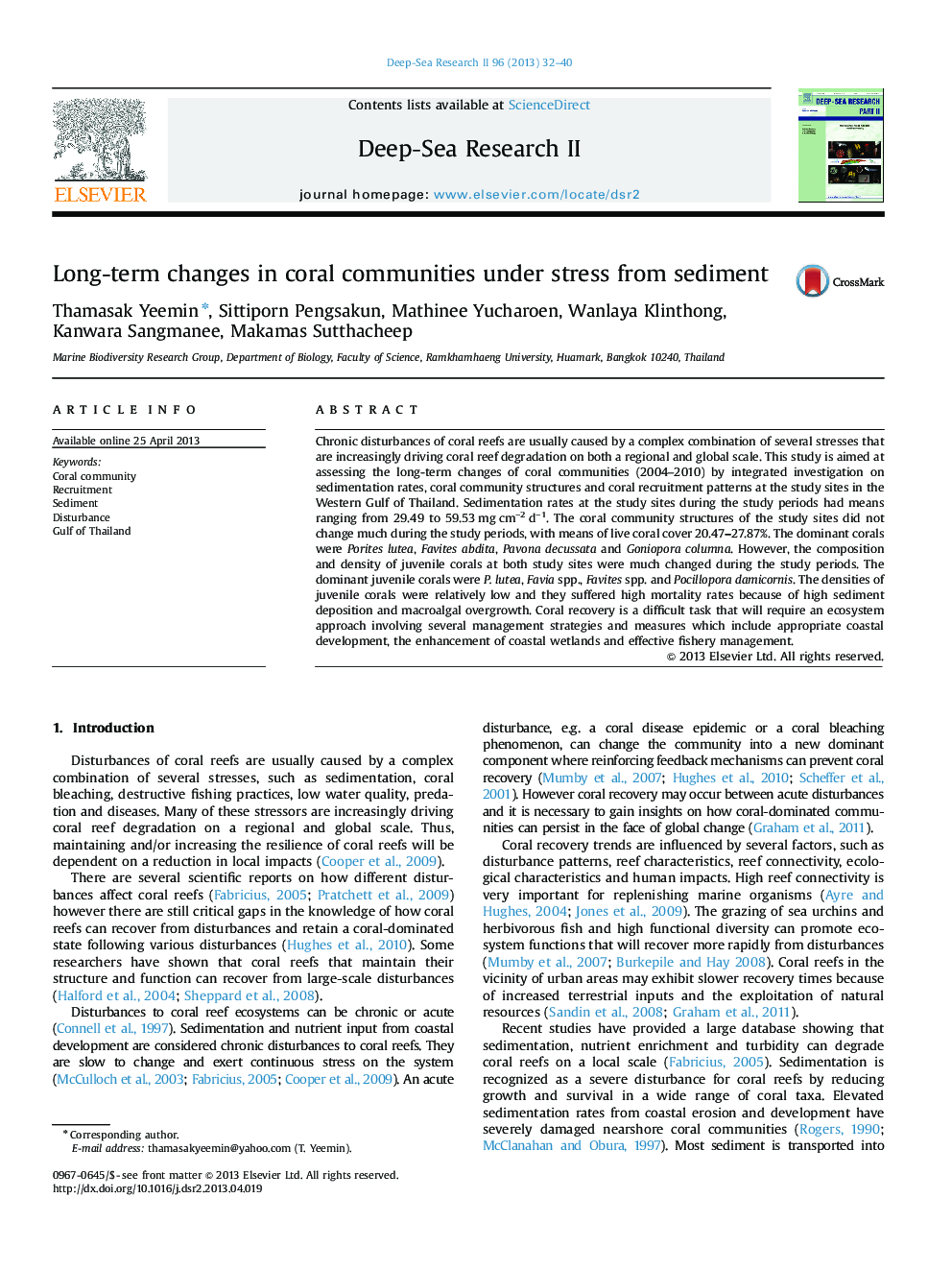| کد مقاله | کد نشریه | سال انتشار | مقاله انگلیسی | نسخه تمام متن |
|---|---|---|---|---|
| 4536514 | 1626443 | 2013 | 9 صفحه PDF | دانلود رایگان |

Chronic disturbances of coral reefs are usually caused by a complex combination of several stresses that are increasingly driving coral reef degradation on both a regional and global scale. This study is aimed at assessing the long-term changes of coral communities (2004–2010) by integrated investigation on sedimentation rates, coral community structures and coral recruitment patterns at the study sites in the Western Gulf of Thailand. Sedimentation rates at the study sites during the study periods had means ranging from 29.49 to 59.53 mg cm−2 d−1. The coral community structures of the study sites did not change much during the study periods, with means of live coral cover 20.47–27.87%. The dominant corals were Porites lutea, Favites abdita, Pavona decussata and Goniopora columna. However, the composition and density of juvenile corals at both study sites were much changed during the study periods. The dominant juvenile corals were P. lutea, Favia spp., Favites spp. and Pocillopora damicornis. The densities of juvenile corals were relatively low and they suffered high mortality rates because of high sediment deposition and macroalgal overgrowth. Coral recovery is a difficult task that will require an ecosystem approach involving several management strategies and measures which include appropriate coastal development, the enhancement of coastal wetlands and effective fishery management.
Journal: Deep Sea Research Part II: Topical Studies in Oceanography - Volume 96, November 2013, Pages 32–40